From the 1995 Zephyr archives…
Maxine Newell was born in New Mexico in 1919 and moved to western Colorado a year later. She has lived in the Four Corners country ever since. In 1995, I sat down with Maxine and a tape recorder and talked about Life more than a half century ago…
We moved to Dove Creek when I was a year old, in 1920. My first memories are of Urado, a town that was right on the Utah/Colorado line. My dad pre-empted and homesteaded down there. That was 20 miles from Dove Creek and we did all our shopping there at a place called the P.R. Butts store, which is still standing and very much intact. At one point it was the courthouse before it became Butt’s store. One thing I remember about Mr. Butt is that he never let anybody go away without getting what they needed; if they didn’t have enough money to pay, they could charge it, and they always paid later.
JS: What did people do to make a living in Dove Creek? Was it the Pinto Capitol of the World back then?
The pinto beans didn’t come in until later. Before that people were trying everything. My father tried to farm black-eyed peas and wheat and nothing seemed to grow. Dove Creek’s season was too short. World War II put it on the map. They tried pinto beans and discovered the land was made for them and that’s what made Dove Creek flourish…that’s the only thing it had going for it.
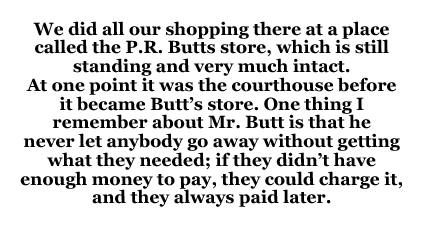
JS: You told me a story once about your grandmother’s appreciation of the giant sage that covered that area…
My family came from Missouri and my grandmother thought the sage brush was the most beautiful shrub she had ever seen. At that time everybody was grubbing sage. My dad would teach school during the day and grub sage at night. They’d pile it in big windrows and you could see the fires burn along the edges of peoples’ property. We used to say the bigger the sage, the better the land; some of it grew shoulder-high. But my grandmother watched them grubbing all this sage and knew they’d grub it all out. Everybody laughed at her when she said they ought to save a patch of it and not let anybody touch it. But now when I go from Dove Creek to Cortez, I remember what she said; you see very little of it left.
JS: What was life like in Dove Creek then?
My dad had the first overland mail route between Dove Creek and Dolores, and so when we got to be high school age we lived in Dolores for awhile. In Dove Creek, as for ‘conveniences,’ we had the only bath tub in the town. Dad built a tub out of lightweight tin with a porcelain cover. And then there was a water stand which you’d fill with water from the pump. When it was full. you’d light a fire under it and heat the water and take a bath. Afterwards, we drained the water into the garden so we never wasted anything.
And during this time in the early 30s, we had no electricity or phones. We lit our homes with gasoline lamps. It’s amazing we kids didn’t blow ourselves up. My mother was running a little grocery store my dad had started in Dove Creek and so one of our jobs was to fill the lamps. We’d take the lamps out on the porch and fill the lamps and pump them up ready to light. The first time any electricity came in to the area was with REA (Rural Electrification Association) in the late 30s.
JS: When did your family move to Monticello?
It was in 1936. It was a great change from the school I had attended before. At the Dolores school, it was quite strict. When I moved to Monticello in the middle of my sophomore year, it was just a playground. We didn’t have any teachers. We didn’t learn anything. The kids would crawl out the window and go home if they wanted to. No discipline at all and I just thought it was great. I got to play basketball and we had a band. We even organized a dance band. The band teacher was more interested in his pupils than any of the other teachers. But it was probably the worst school you can ever imagine and we got good grades because they didn’t dare fail us. I have no idea whether I learned anything there or not. I must have though.
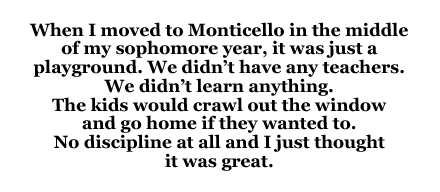
JS: Do you recall the winters in Dove Creek and Monticello back then?
Oh my, yes. Our main sport was sleighriding of course. I got to sleighride a lot if I would take my brother with me. My dad drove the mail truck, and I can remember night after night, we would all stand at the glass door watching the top of the big hill, waiting to see the lights of dad’s mail truck. When we saw the lights my mother would start to warm his dinner.
The county actually did a pretty good job of keeping the roads open in the winter. They had big snow plows and excellent people to run them. Homer Kahn would work them whenever we had a storm. But they were dirt roads and they weren’t so bad in the winter as they were in the spring when everything melted. Then those roads would just become bottomless.
After we’d lived there awhile, my mother would put us on the mail truck every Saturday so my sister and I could take music lessons in Dolores. Sometimes we’d get stuck in drain ditches that were incredibly deep and we’d be stuck there until someone came along to pull us out. When Dad first started carrying the mail, while we were still in Dolores, he’d go halfway and my uncle would start from Dove Creek and they’d meet in between to exchange mail sacks. That was 48 miles by dirt road and you couldn’t do it in one day.
JS: What the basic mode of transportation by the mid-30s? Did most people have cars by then?
Oh no, not at first. The cars I remember most…there was a very wealthy rancher and his grandsons used to come out and spend the summers with him. They all had big Hudson cars and you could hear them coming from one end of Dove Creek to the other. And every time my mother heard the Hudson coming, she’d round us up and put us in the house because those boys were pretty wild. You never knew if the kids were safe when those Hudsons were in town.
JS: When was your first trip to Moab?
I came down here to play basketball when I was in high school. Then after that, we went through Moab a lot on our way to Grand Junction to shop. It wasn’t very impressive then, you know. In Monticello, everybody grew some flowers and had a green lawn, and in Moab I guess there were some green lawns and flowers, but not necessarily everywhere. It was a lot hotter here, of course, and people just didn’t bother with it. They might have a rose bush by the door and that was the extent of the landscaping. There were no motels here when we came down to play basketball, so they’d farm us out to different homes in Moab.
The road into town was a lot different then too. The old road came down where Mill Creek Drive is today, past Milt’s to Center. Main Street ended at Mill Creek going south then. Even when Ralph Miller built his shopping center, there was no road to it. There was a dip across the creek and if it wasn’t running you could go to the other end of town. But right after that, they put the highway in and bridged Mill Creek. Ralph was always years ahead of his time.
JS: What about the orchards?
Oh yes. There were orchards and strawberry patches and there used to be a man, a funny little old guy that I can’t think of anybody to compare him to…they called him the Kingfish. He would truck garden his produce. He came to Monticello one time and sold my dad some melons for his little grocery store. Then Dad came out the door and he was selling melons out of his truck 20 feet away, so Dad made him load up all the melons he’d sold him. Of course, the fruit orchards were the first thing to go when the Moab started to grow, mostly because of the water.
JS: Can you tell me about Marie Ogden and the Home of Truth and the time you stopped there on your way to Moab?
Marie Ogden came here from New York or Florida, or maybe both, and she started this religious organization and supposedly had visions. Anybody who joined her organization had to giver her all their worldly possessions and then they came to live with her. They lived like communists, but it wasn’t a communist belief, it was a religious belief. She saw in her vision that the desert would turn green and the fertile fields would turn to desert. So she was looking for a vast desert and she found it.
When we went down there, one of her people had just died and she wouldn’t bury her. At the time there was no burial law, just a sanitary law. I remember our Doc Allen was sent down there to check it out, and he said the longer he looked at that woman, the more alive she became. She was perfectly embalmed and under the sanitation law there was nothing to do but let her keep it.

JS: And why wouldn’t Marie bury the body?
She thought the woman was going to come back to life. Finally, the story is, they gathered a lot of sagebrush and cremated the body. Marie said the woman didn’t want to come back and live with her husband anymore; she preferred to move on.
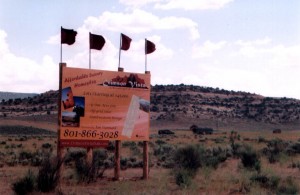
Part of the ‘Home of Truth’ is now being developed as a subdivision of the state lands administration.
JS: And you got to know Marie Ogden?
Oh yes. For years she ran the San Juan Record and my dad had the grocery store, so we knew her. During the war years, when I was roaming around the country, I would write home with descriptions of the places I had been, and Marie would publish it in the paper. She was a very nice old lady, quite pretty and always well-dressed. She finally died in the nursing home in Blanding, maybe ten years ago.
JS: Who were your first friends in Moab?
Well, my husband. He had just returned from the war. I met him at the Hole n’ the Rock. It used to be a restaurant. Albert Christensen and his brother Leo built it. They had a dance hall and a restaurant, and it was really the only honkytonk anywhere nearby. There was nothing like it in Monticello or Moab, so we’d all congregate and meet down there. It was in San Juan County and was too far away for the San Juan Sheriff to patrol, and Grand County wasn’t interested because it was just another burden on them and it wasn’t in Grand County anyway. So it became the wildest place and finally somebody got stabbed down there and they had to take away their beer license. And that’s where I met my husband Hub.
JS: Jumping back a bit, tell me about World War II.
I was living in Monticello and working in a government office there. I’d gone to college in Gunnison but came home on a vacation and got this job so I never went back to school. I took a civil service exam and received a notice that I’d been offered a job in the State Department. I had never been any farther from home than Salt Lake without my parents with me. So I got on a train and went to Washington, D.C. I was 20 years old and I stayed there a couple of years. Then I heard we were building a road to Alaska that they called the Al-Can Highway at the time. We thought that would be pretty exciting so another girl and I applied for the job and off to Edmonton we went. We were there until the last year of the war and the project was winding down, so we transferred to San Francisco. That’s where I was for V-J Day which was pretty exciting. And then I came home where I met Hub at the Hole n’ the Rock.
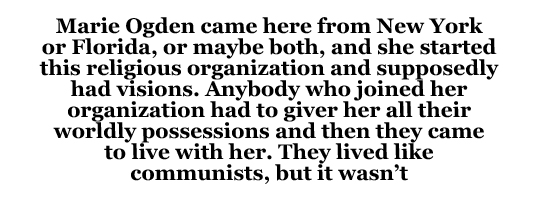
JS: But you didn’t know Hub before then.
No. Moab kids were pretty wild. My parents made them off-limits and we couldn’t date them. But I married one. He was a good friend of Donna Loveridge and her husband had grown up in Moab too. So he used to come up to see them all the time and I just managed to capture him.
NEXT ISSUE: Maxine remembers uranium, boom days in Moab, and Charlie Steen.
Click here to read Part 1 of the PDF version of this article
Click here to read Part 2 of the PDF version of this article
Don’t forget our loyal Backbone members!

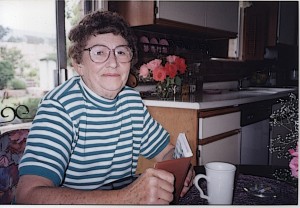
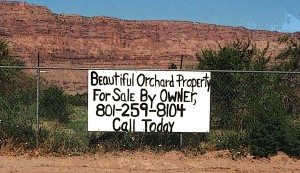
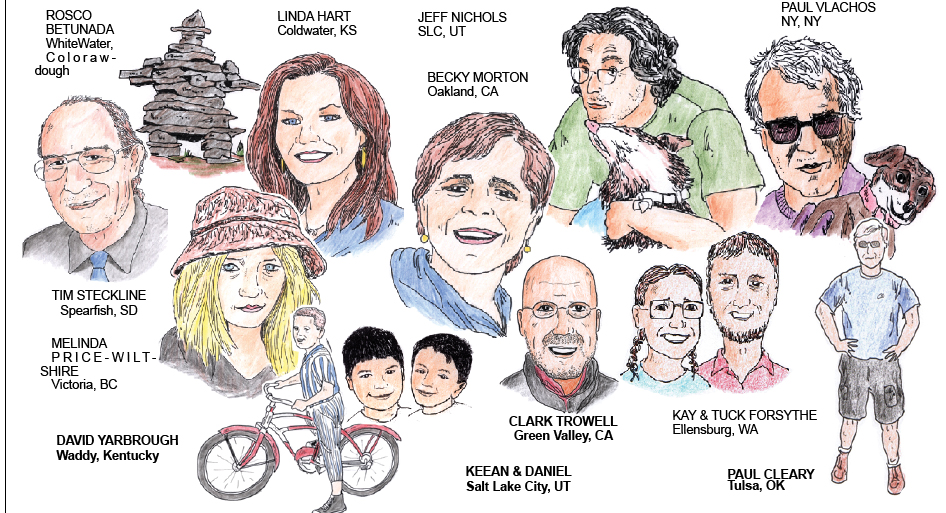
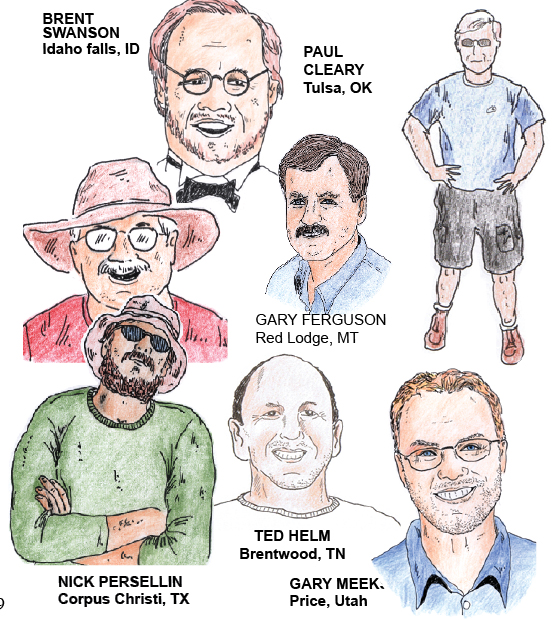
Love reading the history. My father in law grew up in Moab and his dad used to own a bunch of the orchards that are now condos.